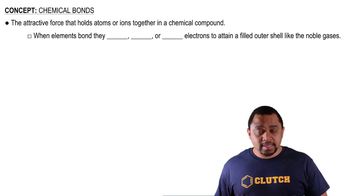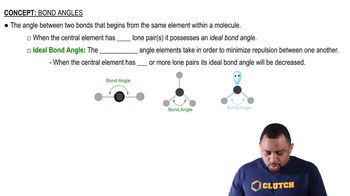Two compounds are isomers if they have the same chemical formula but different arrangements of atoms. Use Table 8.3 to estimate H for each of the following gas-phase isomerization reactions and indicate which isomer has the lower enthalpy. (d) Methyl isocyanide → Acetonitrile
Consider the molecule C4H5N, which has the connectivity shown below. (a) After the Lewis structure for the molecule is completed, how many s and how many p bonds are there in this molecule?

 Verified step by step guidance
Verified step by step guidance
Verified video answer for a similar problem:
Key Concepts
Lewis Structures

Types of Chemical Bonds

Bond Counting

The Ti2 + ion is isoelectronic with the Ca atom. (b) Calculate the number of unpaired electrons for Ca and for Ti2+.
The Ti2+ ion is isoelectronic with the Ca atom. (c) What charge would Ti have to be isoelectronic with Ca2+ ?
(c) Hydrogen peroxide is sold commercially as an aqueous solution in brown bottles to protect it from light. Calculate the longest wavelength of light that has sufficient energy to break the weakest bond in hydrogen peroxide.
The electron affinity of oxygen is -141 kJ/mol, corresponding to the reaction O(g) + e- → O-(g). The lattice energy of K2O(s) is 2238 kJ/mol. Use these data along with data in Appendix C and Figure 7.10 to calculate the 'second electron affinity' of oxygen, corresponding to the reaction O-(g) + e- → O2-(g)
